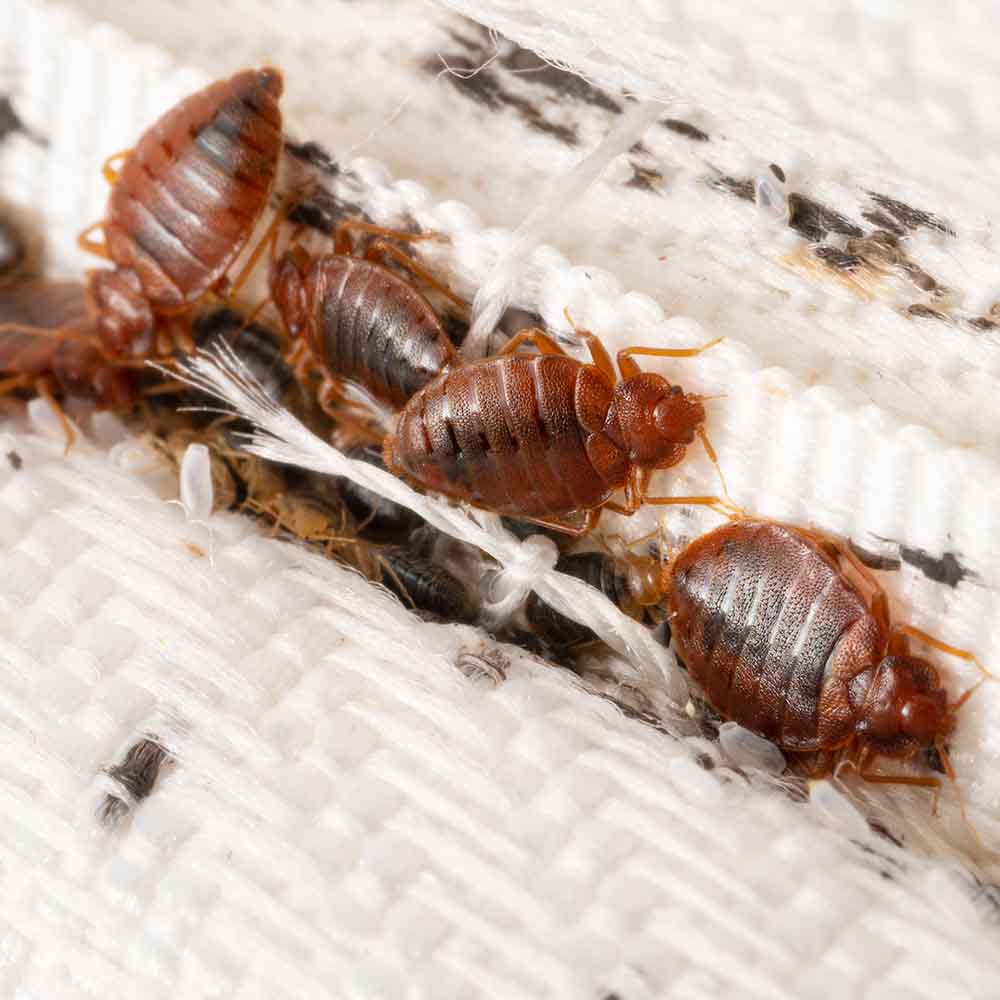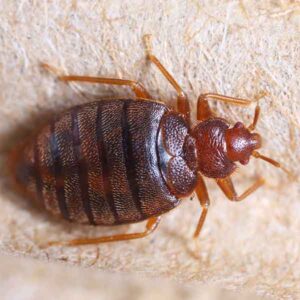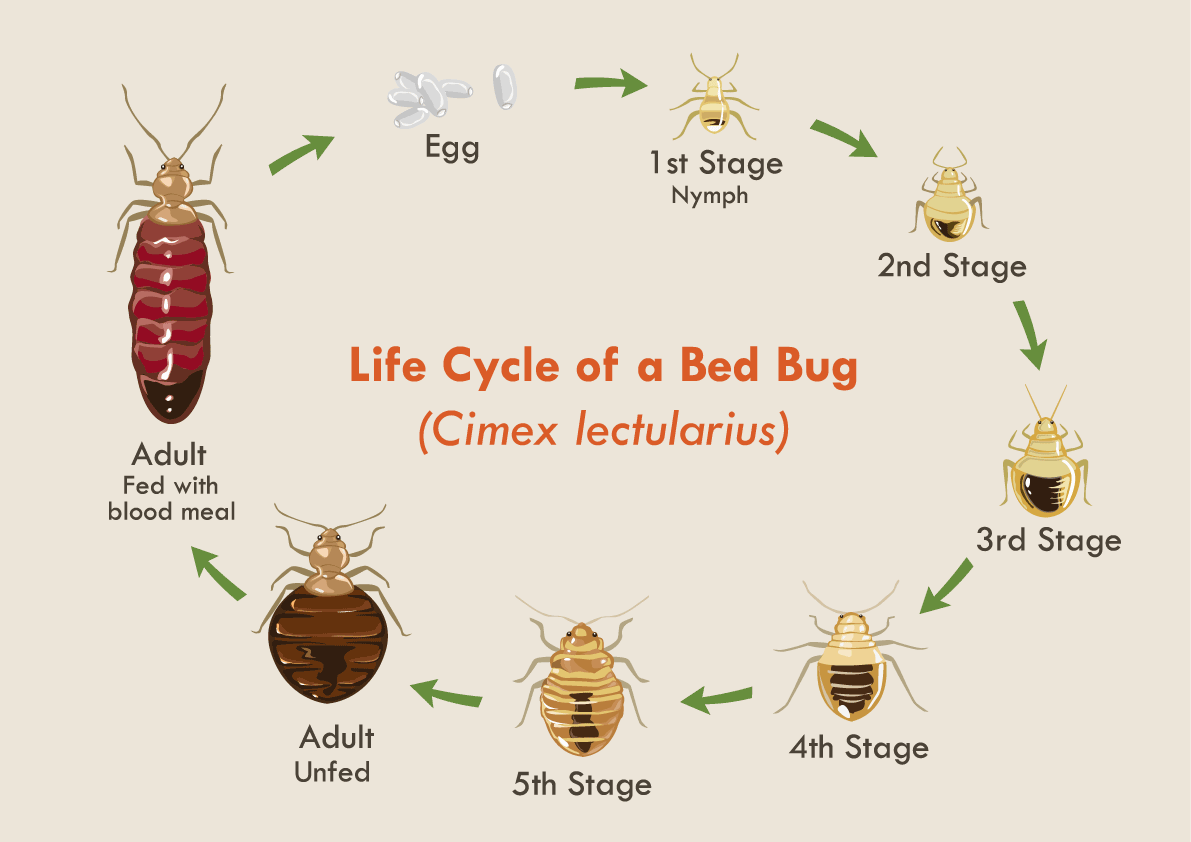Bed Bug Treatments In The St. Louis Metro East

Bed Bug Removal
We provide professional bed bug treatment services to eliminate bed bug infestations in homes, businesses, and other properties. Our team of expert technicians follow a treatment protocol that kills bed bugs on contact, while leaving a long-lasting residual effect to prevent future infestations.
With our safe, EPA-approved products, you can trust us to quickly and efficiently eradicate bed bugs from your property. Our bed bug chemical treatment is an effective, affordable, and convenient solution to your bed bug issue. We guarantee our service, and will work to eliminate the bed bugs for good.
Our treatment protocol, which we outline below, has been designed to quickly eliminate bedbugs from your home, and provide you with immediate relief. We are typically able to achieve complete control in one visit, but in some more severe cases we may have to provide a follow-up treatment to ensure complete control.
How We Exterminate Bed Bugs
No single technique is perfect, so we’ve developed a treatment protocol that integrates multiple methods of bed bug control to effectively eliminate bed bugs from your home.
Step 1: Vacuum & Steam
First, we use HEPA certified vacuums to remove all of the bed bugs we can see. This first step allows us to quickly reduce the bedbug population in your home. Next, we utilize a high pressure commercial steamer to instantly kill fully grown bed bugs, nymphs, and eggs on contact. Our steam wands can reach deep into couch cushions and other cracks and crevices to get to where the bed bugs hide. We will steam your mattress, box springs, & other locations bed bugs like to hide.
Step 2: Bed Bug Treatment Products
We utilize EPA approved and safe bed bug products to your mattress seams, bed frame, couch cushions, and even your baseboards to create a protective barrier. Any bugs not reached by the steam will have to go through this barrier, and will be killed shortly after contact.
Step 3: Residual Treatments
We use a silicon based dust and in areas that bed bugs are known to hide. This dust provides about 6 months worth of protection, eliminating bed bugs that come in contact with it. We will use this behind baseboards, inside electrical sockets or or other cracks and crevices where we cannot use a liquid treatment or steam.
Step 4: Mattress Encasements
Now that we’ve killed the bed bugs in your mattress & box springs, it’s important to prevent wandering bed bugs from hiding there again. We will provide you with mattress encasements that completely block bed bugs from getting out or in. These mattress encasements keep you from having to buy a new mattress and box springs.
What Are Bed Bugs?
Bed bugs are small insects that feed on human blood and while they are not generally a health concern, they are a nuisance that should be eliminated. They have been around for as long as humans have, but recently they’ve become a larger problem in the St. Louis Metro East. Over the last 5 years reports of infestation in our area have increased by almost 25%.
Bed bugs are not known to spread disease, or to cause long term harm to humans. That said, some people react more strongly to bed bug bites. While some people may never even notice they’ve been bit, other people will have swelling and itching after a bite. Some people become more sensitive to bed bug bites over time, and will start having reactions to bites when they may not have previously.

What Does A Bed Beg Look Like?
Bed bugs are small, oval, brownish insects that are between 4 and 5 millimeters in length. Mature bed bugs are brown in color, while immature or nymph bed bugs may be light in color, but may have a dark red or brown spot in the middle, when they have their first blood meal. They have flat bodies and resemble apple seeds. When a bed bug has recently fed, it’s body will blow up like a balloon and may elongate.
Bed bugs are most active at night and feed on the blood of humans and other warm-blooded animals. Bed bugs have six legs and two antennae. Bed bugs do not have wings, and cannot fly.
Bed bugs are visible to the naked eye at all stages of life, and you don’t need special equipment to see them.
The Life Cycle of a Bed Bug
The life cycle of a bed bug begins with an egg, which is white, oval-shaped and approximately one millimeter in length. Female bed bugs can lay up to five eggs per day. The eggs are sticky and will usually be found on or near the surface of the material surrounding the host. The eggs hatch in about 10 days and the nymphs, or baby bed bugs, will begin to feed on the blood of their host.
After a bed bug egg hatches, it goes through 5 different growth stages before becoming an adult who is capable of reproducing, called nymph stages. Bed bugs require a blood meal to move from one stage to the next. When they move to the next stage, they will shed their exoskeleton, leaving behind their shell.
Adult bed bugs live approximately 10 months, and lay over 500 eggs during their life. Without a blood meal, bed bugs can remain dormant for over a year.

How To Identify A Bed Bug Infestation
When it comes to identifying bed bugs, there are several signs you can look for that indicate you may have a bed bug problem. Some of the evidence that you’ll find are feces stains, shed bedbug shells, and bedbugs themselves.
Bed bugs tend to hide deep in cracks and crevices in your mattress and furniture after they’ve taken a blood meal, usually within 8 feet of where people rest. You’ll find them in pillow cases, the seams of your mattress (usually at the corners), and between your mattress and foundation. They also hide in the small gaps of bed frames, and in furniture or electronics you keep near your bed. We’ve even found bed bugs in curtain rod sleeves and hems in drapes.
One of the most frequent signs of bed bugs is small stains on your sheets, pillowcase, or mattress. These small stains are bed bug feces, and the dark brown color is digested blood.
Another sign is identifying eggs; although tiny, only around 1mm long, if enough are grouped together they will form a pattern visible to the naked eye.
Prevention Methods
Now that you know what to look for when identifying a bed bug infestation, it’s important to consider prevention methods.
Regularly checking furniture and mattresses as well as inspecting yourself after spending time away from home helps minimize the risk of bedbug invasions.
When travelling, or staying somewhere other than home, take extra precautionary measures to ensure your home remains bug-free:
- Laundry Care: Wash and dry all clothes at high temperatures (at least 130°F).
- Inspect suitcases carefully when returning home and isolate it away from other items in your house.
- Vacuum luggage thoroughly upon arriving back home, and dispose of the bag immediately.
By taking these preventative steps and being vigilant about checking for signs regularly, you can help protect yourself and others from bedbug infestations in St Louis Metro East area.
For more information on bed bug prevention, check out this Bed Bug Prevention Guide provided by the EPA.
Our Bed Bug Control Guarantee
We always quote a price that guarantees complete elimination of Bed Bugs. We’ll do whatever it takes to eliminate your bed bug infestation from your home.